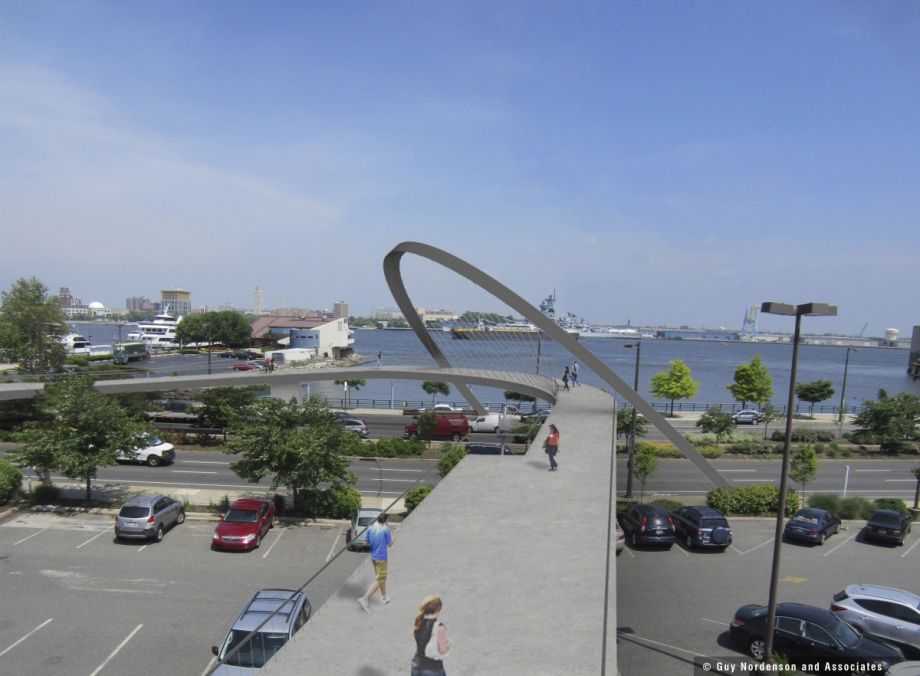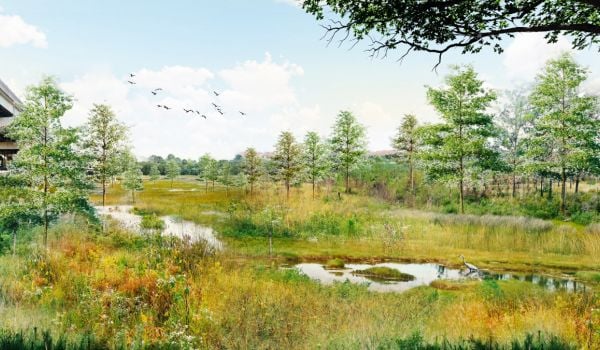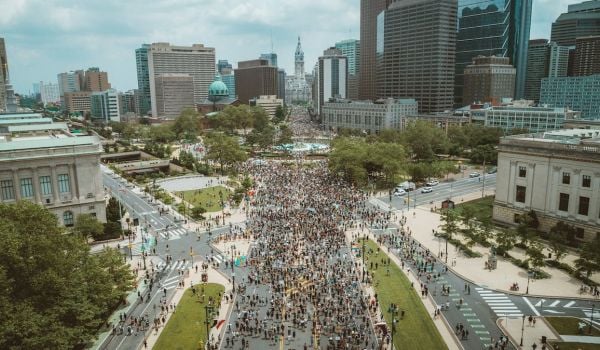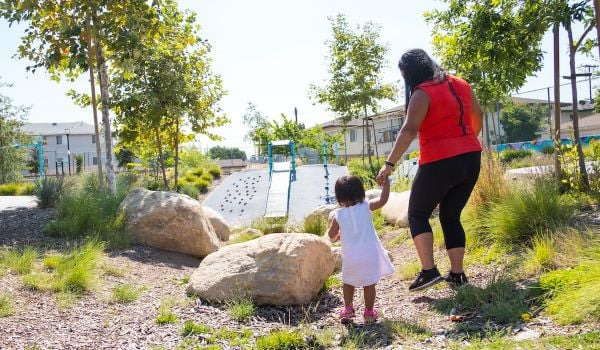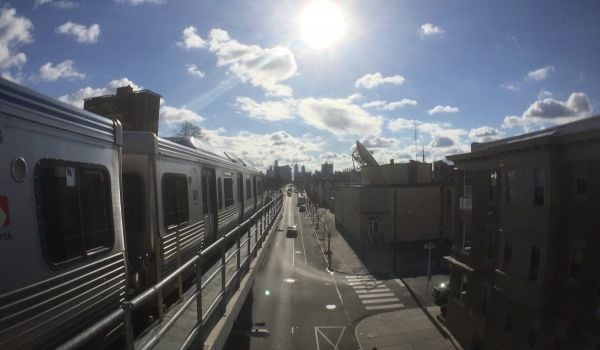All but the final $10 million needed to cap four acres of I-95 in Philadelphia and reconnect the city to its waterfront are now accounted for, officials announced Friday. The Pennsylvania Department of Transportation, city of Philadelphia and William Penn Foundation have pledged $100 million, $90 million and $15 million, respectively, Curbed Philadelphia reports. In an announcement Friday, officials said they are confident that the remaining $10 million of the $225 million project will be “secured in a timely fashion.”
The project seeks to remedy a divide between the city and its waterfront created with the 1970s-era construction of the freeway. The capping area will include an ice-skating rink, spray pools, a cafe and the existing Irish and Scottish memorials. The South Street bridge will also be expanded and new trails will be constructed. The designer is Hargreaves Associates.
According to Philadelphia magazine, the park is envisioned as “the linchpin of an even greater transformation of the riverfront, with some 1,500 new housing units, 500 more hotel rooms and more than 100,000 square feet of retail, dining and entertainment space to be added down the road. These projects are projected to generate up to $1.6 billion in revenues for the city, the Commonwealth and the School District.”
“For decades, Philadelphia left millions in tax revenue on the table by not investing in its waterfront,” Mayor Kenney said in a statement. “We are behind the curve in comparison to other major cities who have all seen significant economic growth thanks to public investment in their waterfront properties.”
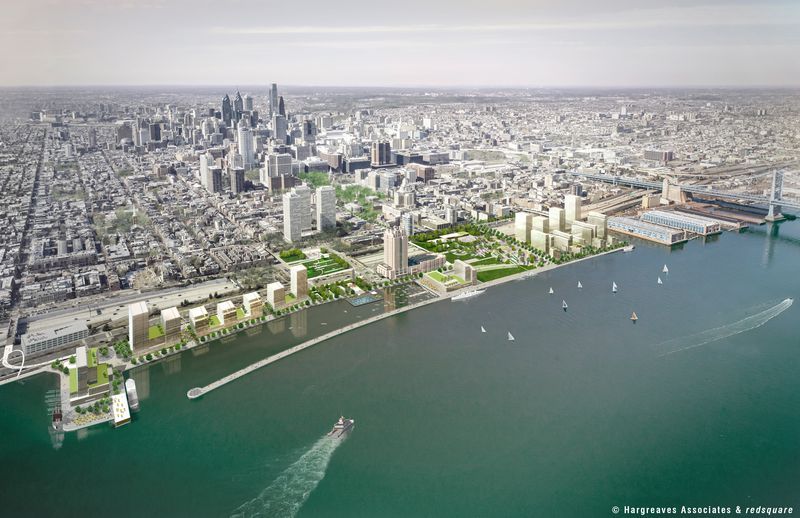
(Credit: Hargreaves Associates)
Freeway-capping projects are emerging as the next darling of urban architects — the new linear park-atop-an-the-abandoned-railway (or freeway). Plans are currently on the drafting table in Seattle and Atlanta, and a similar capping park over a railway is being planned in Toronto.
“It’s what cities in the 21st century that want to be competitive are doing,” David Allman, chairman of the Buckhead Community Improvement District (which proposed the Atlanta concept) told Kinney last year.
According to Curbed, the design process, including permits and construction documents, is expected to be completed by the end of 2019. Construction is expected to take roughly three years.

Rachel Dovey is an award-winning freelance writer and former USC Annenberg fellow living at the northern tip of California’s Bay Area. She writes about infrastructure, water and climate change and has been published by Bust, Wired, Paste, SF Weekly, the East Bay Express and the North Bay Bohemian
Follow Rachel .(JavaScript must be enabled to view this email address)

